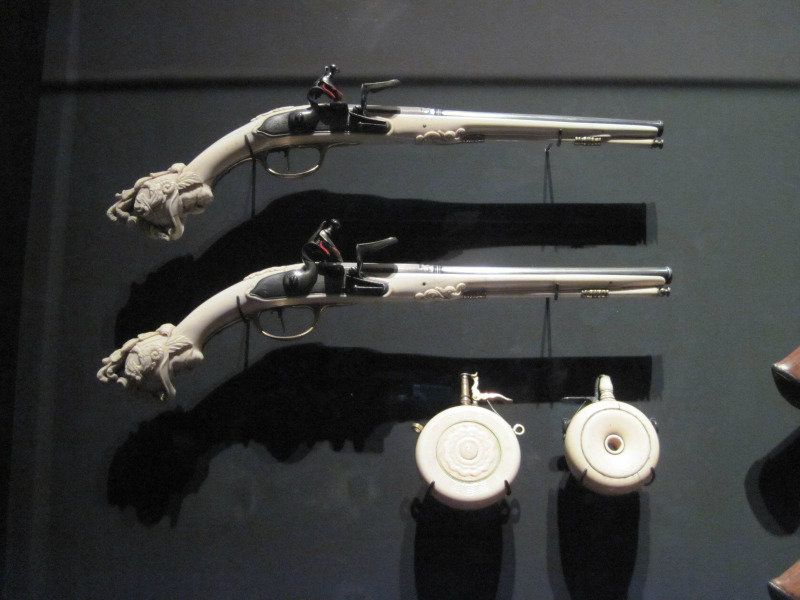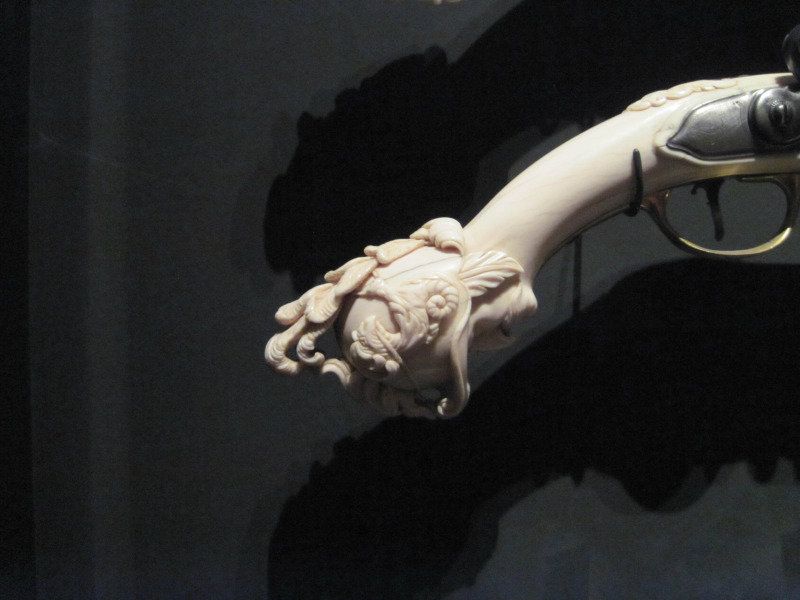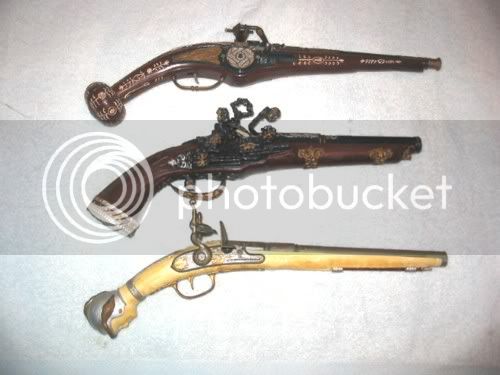Those are wheel-locks.
The arm that holds the flint (usually quartz actually) is spring loaded but it really doesn't snap backwards.
Instead, when he's (she's) ready to shoot, the shooter uses his/her hand to pull the arm back and down. On the fancy ones, this moves the pan cover out of the way exposing the prime and the grooved wheel which the quartz rests against.
The spring only holds the flint (quartz) against the wheel.
A pull of the trigger releases the wheel which then spins causing the quartz to make sparks right in the middle of the prime.
Wheel-locks, which proceeded the snaphaunce and the flintlock have incredibly fast ignition speeds. So much so that this ignition system was the favored type for target guns long after the flintlock became commonly used.
The wheel-locks popularity died out because their locks were quite complicated and very expensive to make or repair.









